Venoms, poisons and toxins: nature鈥檚 arsenal
Can a poisonous frog become victim to its own toxins? In this edition of The Curious Cases of Rutherford and Fry, Dr Adam Rutherford and Dr Hannah Fry are inspired by this question from a listener to inject their minds with a cocktail of facts about the finer points of venoms, poisons and toxins.
-
![]()
The Curious Cases of Rutherford & Fry: The Venomous Vendetta
Can an animal react badly to a toxin it itself produces? asks Janni. Rutherford and Fry delve into the dangerous, complex world of venomous animals, immunity and evolution.
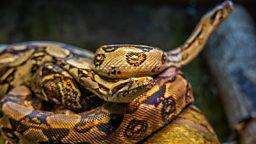
A toxic terminology
Venoms and poisons are toxic because they’re made up of chemicals that cause harm. The difference between venom and poison is all in the delivery. A venom is injected, for example by a snake’s fangs, meanwhile poison is ingested, which is the case for the tree frog which secretes its toxins to protect against predators.
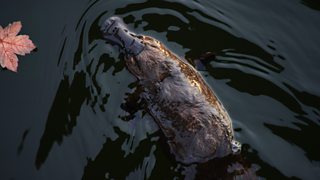
If you eat an animal, and you die, then it's poisonous. And if it bites you and you die, then it's venomous.Steve Backshall
Award-winning wildlife explorer Steve Backshall, best known for his 91热爆 series 'Deadly 60' and author of Venom – Poisonous Creatures in the Natural World, puts it like this: “If you eat an animal, and you die, then it's poisonous. And if it bites you and you die, then it's venomous.”
The animal arms race
There are thousands of animal species that use toxins to stay alive, either in attack or defence mode, including invertebrates (e.g. scorpions and spiders), reptiles (snakes, lizards), mammals (e.g. the slow loris), birds, frogs, and even newts, salamanders, corals and jellyfish. This is not to mention the duck-billed platypus, which has venomous spines on its hindlimbs. A sting from a platypus has been described as being in a whole different league to being shot!
Some animals have become more venomous over time, such as the inland taipan in Australia, considered the most venomous snake in the world. It has evolved this way to kill its desert prey more quickly, and so avoid being attacked. In what Backshall describes as “a biological arms race with its prey” the venom of the inland taipan is believed to be powerful enough to kill 250,000 mice.
There are animals that have become less venomous over time. Dr. Ronald Jenner, principal researcher at the Natural History Museum's Life Sciences, Invertebrates Division and co-author of Venom – the secrets of nature's deadliest weapon gives the example of the marbled sea snake, which mainly eats fish eggs so its venom gland is redundant. “It just shows that in evolution, if you don't need equipment, there's no selection to keep it.”
Snakes alive!
Despite the plethora of animals who make toxins, when we think of venom we mainly think of snakes. Of the 4,000 snake species on the planet, between 70-80% are venomous. However, only 200 are what Professor Nick Casewell, who studies venomous snakes and their impact on humans at the Liverpool School of Hygiene and Tropical Medicine, would call “medically important” in terms of causing fatalities.
Why do animals use venom?
The bottom line is survival. Venoms will immobilise prey and they (along with poisons) will defend the animal against dangerous predators.
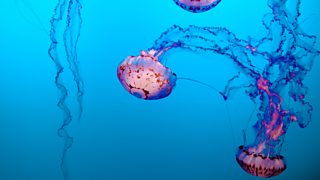
Dr. Jenner says that venom predates speed and cunning as a key weapon in an animal’s arsenal, noting that “venoms have evolved at least a hundred times independently from non-venomous ancestors, the oldest example being old relatives of sea anemones and jellyfish.”
What actually is venom?
Venom is mostly made up of proteins. A venomous snake can have between two and two hundred proteins in their venom. “These toxins do lots of different things,” explains Nick Casewell, “and different species will have a different cocktail of venom toxins depending upon its evolutionary history. So, this could be neurotoxic venom, which causes paralysis, or it could be a hemotoxic venom which causes bleeding disturbances or drops in blood pressure. Or it could be a cytotoxic venom which causes local destruction around the bite site.”
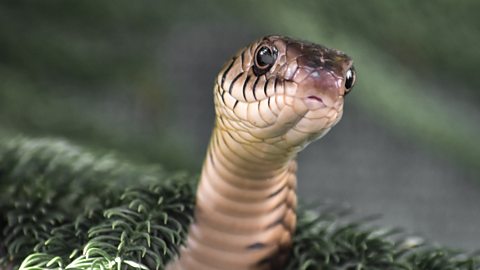
What is venom variation and how does it present challenges for creating treatments for snakebites?
Rutherford & Fry talk to Professor Nick Casewell
Venom variations
Some snakes can deliver a combination of the above effects. To make matters even more complex, venom can vary between one snake species and another. “Even within species,” notes Nick Casewell, “we can see major variations at population levels or geographical levels, where the same species of snake can have a very different range of toxins found in their venom over even relatively small geographical areas.” Sometimes, even the same snakes within the same immediate family can have different venoms! Dr. Jenner gives a fascinating example of the Eastern Brown snake in New Guinea and Australia. The baby snake has a paralysing venom, while the adult has the blood-clotting venom in line with its changing diet.
The genetics of venom
Studies on the genetic and molecular basis of venom variation have shown a real diversity of different genes that are producing different toxins. “Although they're similar to one another and they share some structural similarity,” says Nick Casewell, “they can often have quite different functional activities.” Most of the time, however, these genes will be “working together to cause a more potent effect in prey or in people – for example, you might have multiple neurotoxins, each targeting a different neuromuscular receptor to more effectively block that nerve transmission than just a single toxin would.”
Can venomous/poisonous animals harm themselves?
Yes and no. Many snakes use their venom during mating or for male-to-male combat and so have built up a resistance to their own venom. However, as Steve Backshall points out, the King Cobra eats other snakes and so its venom is obviously effective on its serpent prey.
It had basically paralysed itself with its own venom.Dr Ronald Jenner talking about a brown tree snake
Ronald Jenner gives another example, that of a brown tree snake that was in captivity in Australia. “It had to be moved from one enclosure to another,” he says, “it started thrashing around, and then it bit really hard on its own tail. Of course, the handler removed the tail from its mouth, but 10 hours later, it had died. It had basically paralysed itself with its own venom.”
How do animals protect themselves from their own venom/poison?
Christie Wilcox author of Venomous – How Earth’s Deadliest Creatures Mastered Biochemistry explains that there are a few ways that animals have evolved to prevent their own toxins from harming themselves. One way is to rewire the ion molecules so that toxins cannot open them and harm a specific part of the body. The drawback is that what normally unlocks ions, e.g. a protein, might be prevented from doing so and harm the animal. Another way, says Wilcox, is to “generate some sort of substance that stops the venom from doing what it does before it reaches that target. You see this in species like opossums – they have these proteins in their serum that just bind to venom toxins and kind of gum them up.”
As Hannah points out in the programme, the same technique for stopping a toxin from poisoning the animal that produces it can also evolve in the animals that it wants to eat (e.g. opossums eating rattlesnakes) or could get eaten by!
How widespread are snakebites?
2.7 million people are bitten by snakes every year, with sub-Saharan Africa, the Indian subcontinent and Southeast Asia the areas particularly affected. An estimated 1.8 million of those bitten are “envenomed” and around 140,000 will die. Little wonder, then, that the World Health Organisation reinstated the snakebite among “Neglected Tropical Diseases” in 2017.
If we make an antivenom against 10 different venoms, only about 10% of the antivenom is actually going to be useful for blocking the venom toxins from that one snake species that bites a patientProfessor Nick Casewell
As Nick Caswell points out, even those who survive are at risk from complications. “Maybe as many as half a million people will suffer from long term morbidity as the result of a bite,” he says, “whether it be the loss of limb function, or even potentially the loss of a limb via amputation, or through mental disturbances following the trauma of a snake bite.”
Enter the antivenins
Making an antivenin or antivenom to combat a snakebite involves taking a small amount of venom from a snake and, over a period of some months, immunising a sheep or a horse with small amounts that don’t affect the health of the host animal. “These animals can produce a lot of different antibodies against the cocktail of venom components found in that immunisation,” says Nick Casewell.
Antivenins aren’t perfect, however. “If we make an antivenom against 10 different venoms,” explains Casewell, “only about 10% of the antivenom is actually going to be useful for blocking the venom toxins from that one snake species that bites a patient.” This means more antivenom is needed and that increases the chance of adverse reactions and pushes up cost, a key factor given where snakebites are prevalent. Tablets are in development as an alternative measure, one that could potentially buy precious time given the normal hiatus between bite and medical care.
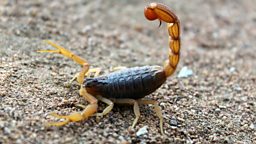
Once stung, never forgotten!

The contributors to the programme have racked up some mind-boggling “war wounds” in the field. Ronald Jenner was bitten by a baby lacewing (which have larger jaws than the adults), a very rare occurrence. However, Steve Backshall has collected the most scrapes. They include being spat at by Cobras and being bitten by the large bullet ant, the effect of which is like being shot and is felt throughout the body. The ant is part of a ritual of a tribe in the Amazon rainforest, where the participant is repeatedly bitten – and this was exactly how Backshall experienced it! “I wasn't aware of anything going on around me, I was completely just in this little bubble of intense, fierce, ferocious pain.” Backshall’s diciest moment, however, was being stung by a scorpion during an expedition in South America. “My whole crew just froze because we all saw that it was going to be bad. And we waited about 15 minutes later, nothing had happened, and I had somehow been delivered a dry sting to my finger for which I am eternally grateful.”
More paws and claws from Radio 4
-
![]()
The Curious Cases of Rutherford & Fry: The Venomous Vendetta
Can an animal react badly to a toxin it itself produces? asks Janni. Rutherford and Fry delve into the dangerous, complex world of venomous animals, immunity and evolution.
-
![]()
The Life Scientific: Tim Clutton-Brock on meerkats, red deer and evolution
What makes meerkats so cooperative and why do sons cost mothers more than daughters? Zoologist and evolutionary biologist Tim Clutton-Brock explains to Jim Al-Khalili.
-
![]()
Inside Science: How Whales Farmed For Food, COP progress, and The Last Stargazers
Gaia Vince hears how blue whales' energetic eating behaviours helped generate more food for themselves.
-
![]()
The Infinite Monkey Cage: In Praise of Flies
Brian Cox and Robin Ince are joined by David Baddiel, fly champion Erica McAlister and zoologist Matthew Cobb to sing the praises of those most maligned of all insects, the flies.






















